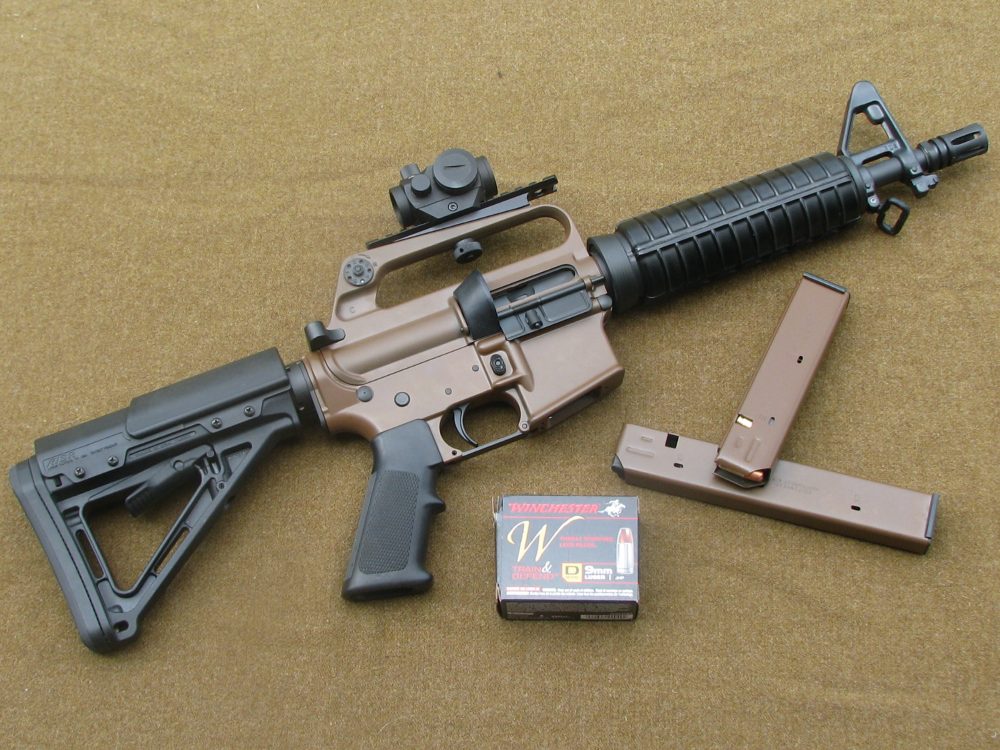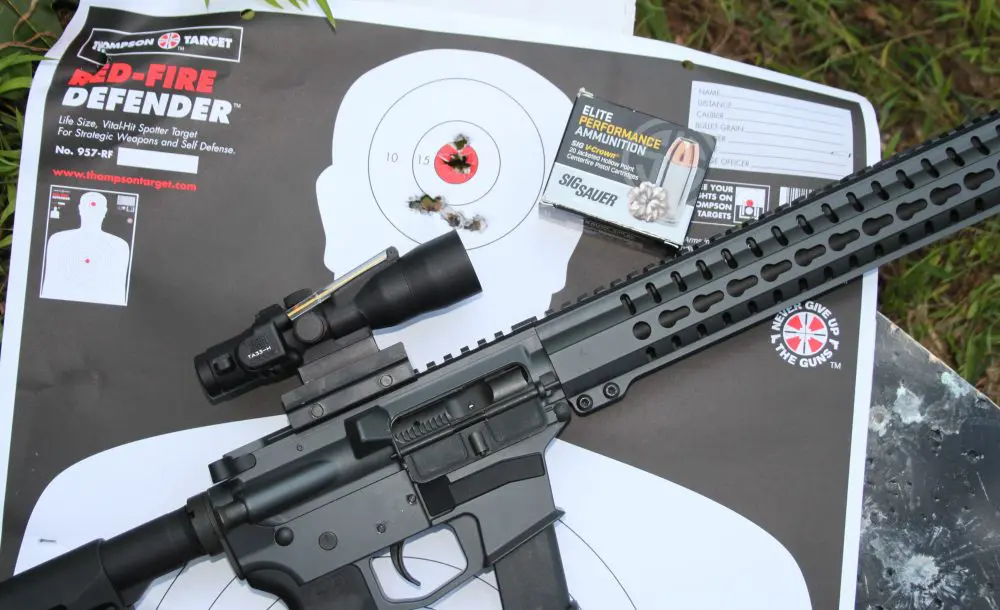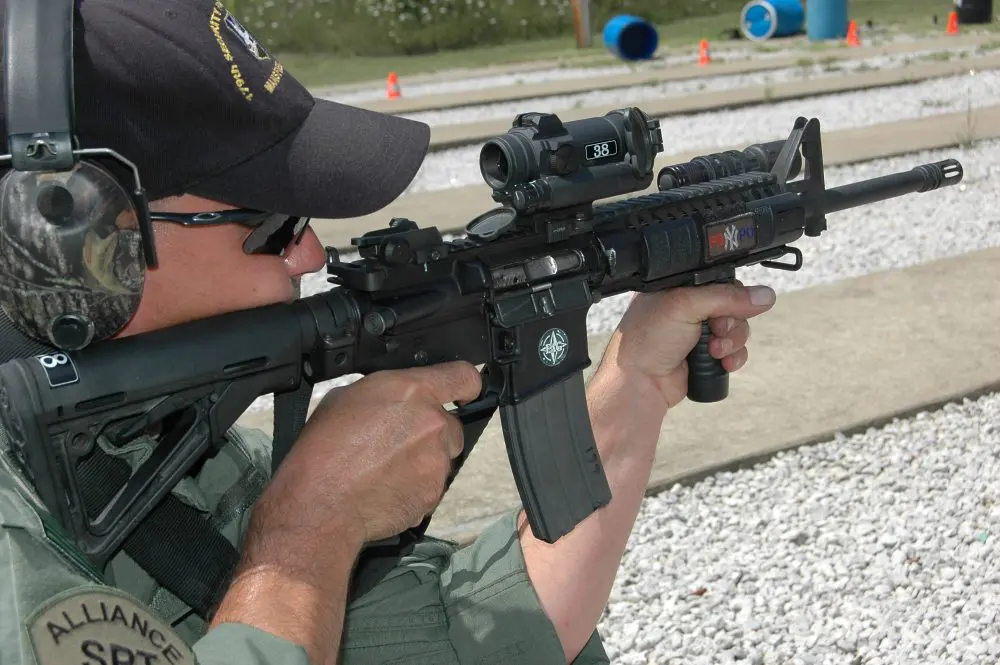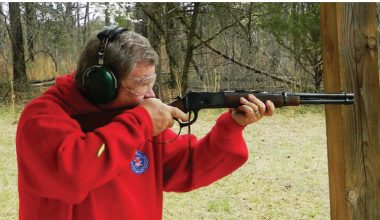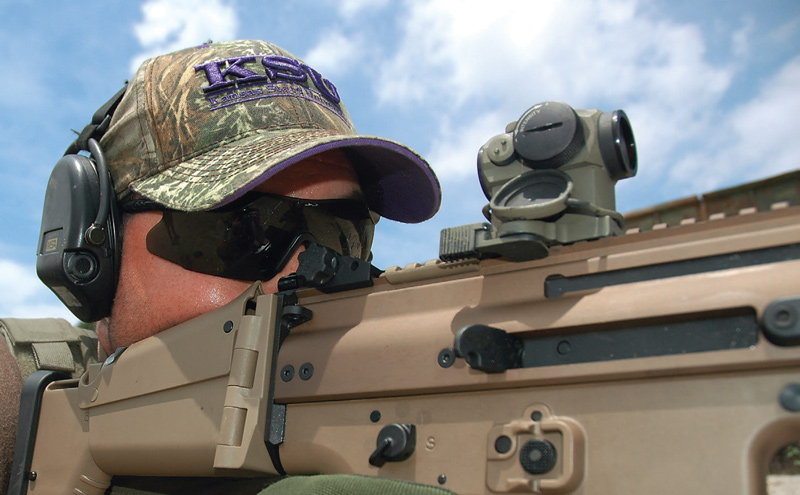
In the early 1980s, I was assigned to NYPD’s storied Central Robbery Division. We identified and arrested a mutt who had committed a number of rapes/sodomies/robberies in midtown Manhattan. We eventually cleared 40 cases on him. We did a quick line-up with several of his victims—enough to anchor him, but as he had just been released from a ten-year pop for doing the same things, we were confident we could tie him in to more.
We brought the perp in for a follow-on line-up, getting a lot of victims where the description (unique) and forensic evidence justified it. I was with one victim, a very bright female executive. We briefed her on the procedure while waiting for another victim to clear the viewing room.
After acknowledging the instruction, she wanted to retell us about the incident. “When the elevator door opened, I saw him, and my stomach clenched. I knew … I knew he was going to hurt me.”
I was befuddled by this and asked her what she did. She stated, “I got in the elevator.” I was beside myself now, and asked why she had boarded the elevator with someone she “knew” would hurt her.
Her comment was telling of how we as a society are. She said, “I didn’t want to embarrass him.”
In order not to embarrass someone, this woman was brutally sodomized, beaten, and robbed. This is not something she will likely forget.
She saw what she considered a threat. But instead of acting on preserving her life and safety, she intellectualized and, as a result, lost.
Overthinking most anything wastes time and will usually lead to the wrong decision.
Table of Contents
ANTICIPATORY ANXIETY
For years we have heard of an allegedly unique trait—women’s intuition. This is, of course, nonsense—it’s sexist and not true. People do, however, have something that may be called anticipatory anxiety. We see someone and, from their appearance, actions, and/or our frame of reference, we get that little stomach flip.
The stomach has no ego, but the brain housing group certainly does. Trusting your instinct works, but only if that instinct has been fully developed. For us, that development comes from our training and our past experiences in dealing with similar situations.
Mandatory caveat: The following applies primarily to carbines, and at ranges at which they do their best work. But it may also be applicable to other systems.
BACK TO BASICS
In order to deliver rapid, accurate shots into our opponent, two things must be accomplished. One is that the sights have to be placed on the target. The second is that the trigger must be pressed straight to the rear with the proper amount of finesse for the situation. These are absolutes, and until they come out with heat-seeking projectiles that can be loaded in an M4 magazine, will remain as absolutes.
Trigger control is the most difficult of the two skill sets to master. The combination of proper finger placement, controlling the trigger straight to the rear, and resetting it baffles many—including those who are experienced. Trigger control is a neverending battle.
Sights are another animal, and the complication here is the variety of sights available.
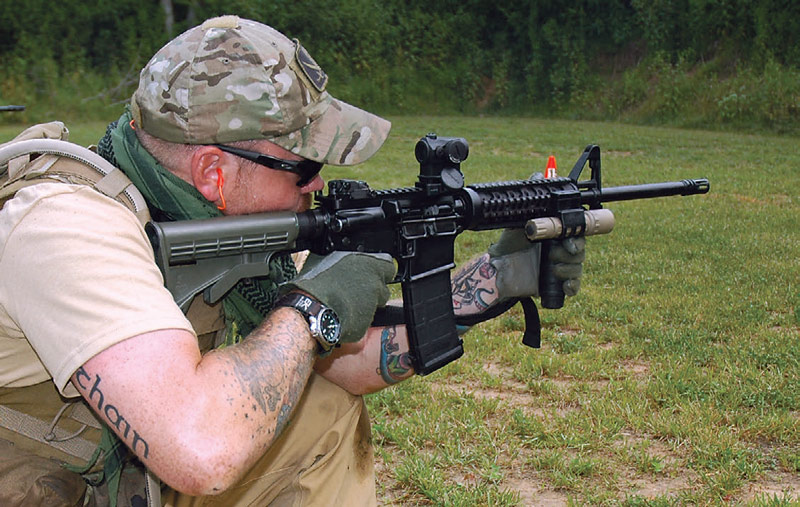
IRON SIGHTS
While iron sights are still in use, they may be only by default. To use iron sights properly, we need to understand that the front sight post should be centered within the rear sight aperture. As the human eye can focus on only one object at a time, that means a clear front sight tip and fuzzy rear sight and opponent. You can be very accurate with iron sights, especially in bright light and when you have time to align the sights. They are less useful in dim/low light or against moving or multiple targets. The accuracy potential decreases drastically if you have eye issues (to include aging).
Add to the mix that you can spend more time aligning the sights (centering the front sight tip in the rear sight aperture) and placing the clear front sight tip (sight picture) at distance. Conversely, we can utilize a flash sight picture at close range. That is, gain a quick reference on the front sight without taking the time to center it in the rear sight aperture.
There is an inverse proportion at work here. At distance, we need more precision, but we may also have more time to execute the shot. At close range, we do not need the same amount of precision, but we do need to make that shot right now.
Iron sights are also difficult to useless in dim light.
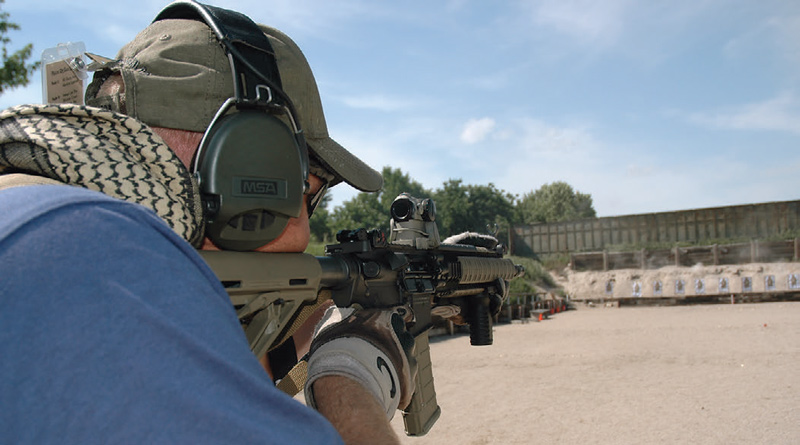
MAGNIFIED OPTICS
Magnified optics do several things very well. They provide the ability to reach out and see better at distance, with target identification being a major benefit. They also—all things being equal—provide the ability to make a more precise shot. (However, we must take into account trigger control, shooter competence, and weapon/ammunition capability. A top-shelf optic on top of a hobby gun with cheap ammo and an incompetent shooter behind it will equal dismal results.)
What magnified optics don’t do well is work at close range. There is, after all, no one product that does everything under all conditions.
Red Dot Sights (RDS) work exceptionally well at close to mid ranges, and with the addition of a flip-up 3X magnifier, they work out to the maximum effective range of the carbine.
Back to the engagement sequence: It starts with acquisition, then identification and, if necessary, processing (engaging) the threat.
Understanding the symbiotic relationship between accuracy and speed (the power being understood), we need to get that shot into a place on the opponent’s body that will cause the requisite amount of damage in the time necessary.
BASIC AND ENHANCED TRAINING
We also need to understand that in training, we have to learn to crawl before we can walk, and walk proficiently before we can run. In initial weapons training, the emphasis is on the basics. In this case, proper manipulation combined with accuracy will dominate this phase of the training.
Strong emphasis on basics paves the way for enhanced training down the line, but consistency—the mother of accuracy—must be locked in first. Many years ago, Bill Jordan—Marine, Border Patrol Agent, and gunfighter—said it best. “Speed is fine, but accuracy is final.” Much later, someone else added the equally succinct “You can’t miss fast enough to catch up.”
Unfortunately, many students get stuck here. They can shoot beautiful little polka-dot groups in the center of the target, but they continue to do that, slowly, long after they should have moved on. Perfect shots that are not delivered are as useless as fast misses.
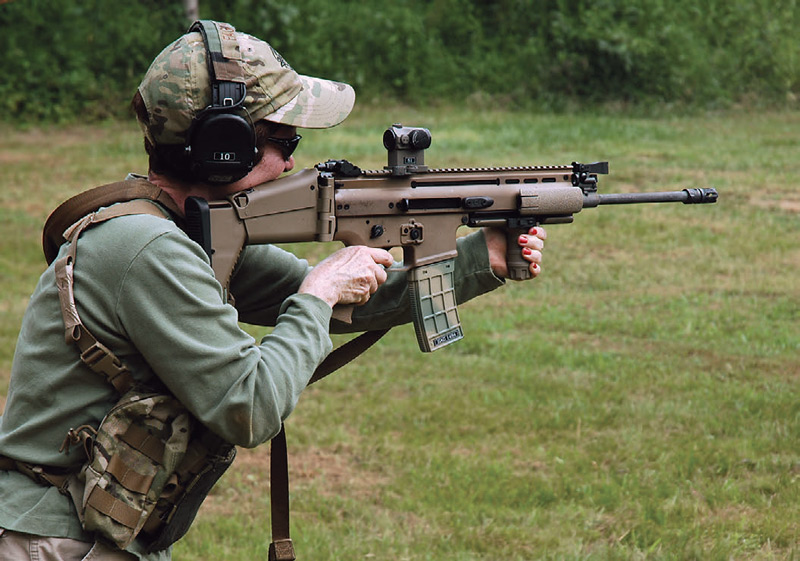
SPEED AND ACCURACY
Increasing speed sometimes comes with a slight degradation of accuracy, though the amount varies. What we need to understand is that we should be looking at acceptable accuracy rapidly delivered, rather than precision accuracy delivered too slowly.
Many people have an issue with increasing speed as they obsess about losing a degree of accuracy. To that end, they will get a sight picture and then not take the shot. They will attempt to redefine that sight picture and start the frustration train out of the station. They’ll eventually come to understand that the clock is ticking, yank on the trigger, and throw the shot someplace other than where it should be.
The solution is easy, though the path toward this particular enlightenment may be twisted and frustrating. Remember that constant repetitions under supervision, those mounts where we bring the gun up and present to the target, build within us an ability to operate at the fourth level of achievement—unconscious competence.
If we revert to our training, and our target is stationary, odds are good that the front sight tip, red dot or other reticle will be pretty much where we need it to be. Of course, it may not be. Movement (yours or his/theirs), non-standard positions, or other influences may make this difficult.
Your first sight picture will likely, but not always, be the best sight picture. If it is within the parameters of your target, press the trigger straight to the rear and continue the fight. If it is grossly out of the ballpark, make your adjustment rapidly. But if it is within your desired Mean Point of Impact, don’t try to make that good shot better. You will likely only make it worse … much worse.
The indecisiveness you are now experiencing, those doubts about what you are about to do, will likely lead to mission failure.
If you are using a magnified optic or RDS, you may experience a phenomenon known as Chasing the Dot. The front sight tip is small and difficult to focus on. The target is blurred and indistinct. With a magnified optic, the target appears larger, and your movement—that wobble area—appears greater. It isn’t, of course, but it appears that way. The red dot is brighter, and therefore your attention is more likely drawn to it, and you are focusing on the threat.
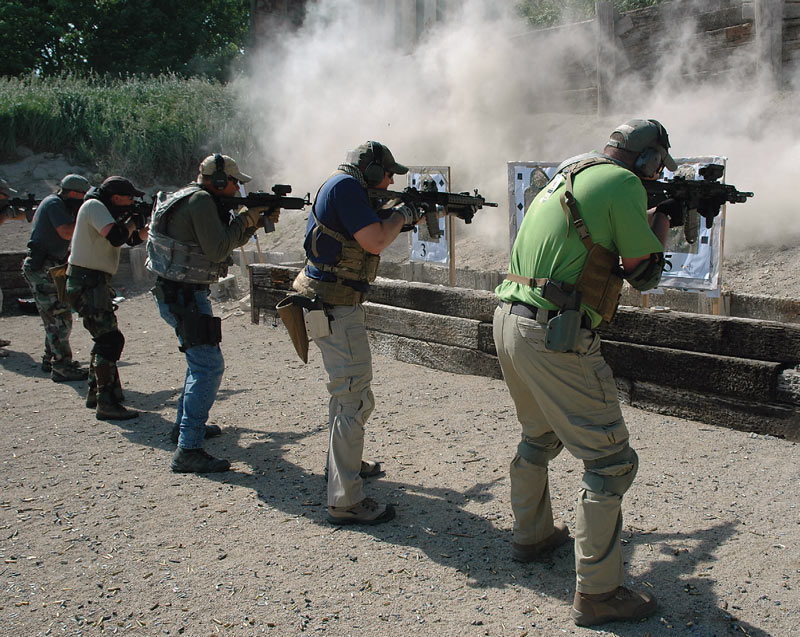
DECIDE AND ACT
The answer is to understand that, once you have made the decision to use deadly physical force, and once the sight is where it needs to be, get busy with the job at hand. At close range, you do not have a whole lot of time to rectify the immediate situation.
To paraphrase the late Gen. George Patton, “a good shot, delivered now, is better than a perfect shot, never delivered” (alternately, “that misses”).
Most people who have never experienced violence are shocked by the speed at which it occurs. This is aggravated by the fact that most people walk around with their heads someplace other than in the instant. As a result, the act may be over before they even know it began.
The first best sight picture you get may be the only one you get. See him. Shoot him. Quit thinking about it.
Remember the lady executive in Manhattan. One day you may have the opportunity to make such a decision. You can do it right, or talk/think yourself into defeat.
The choice is yours….
